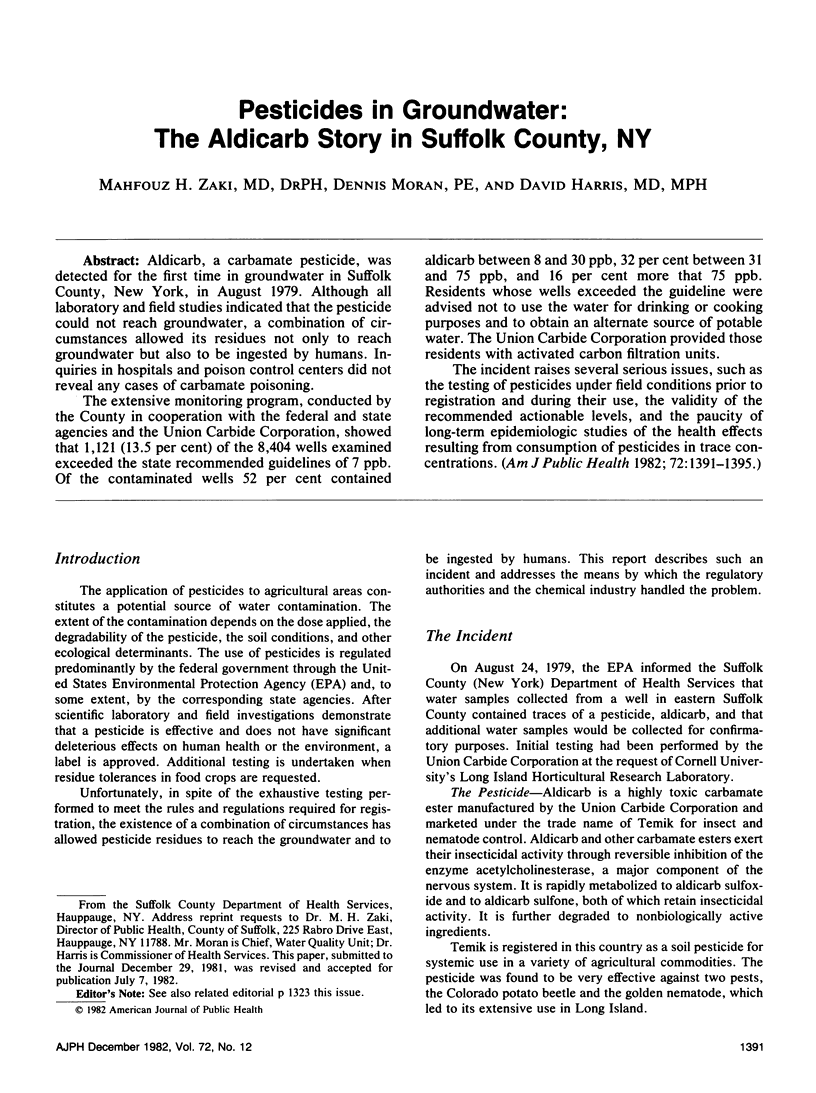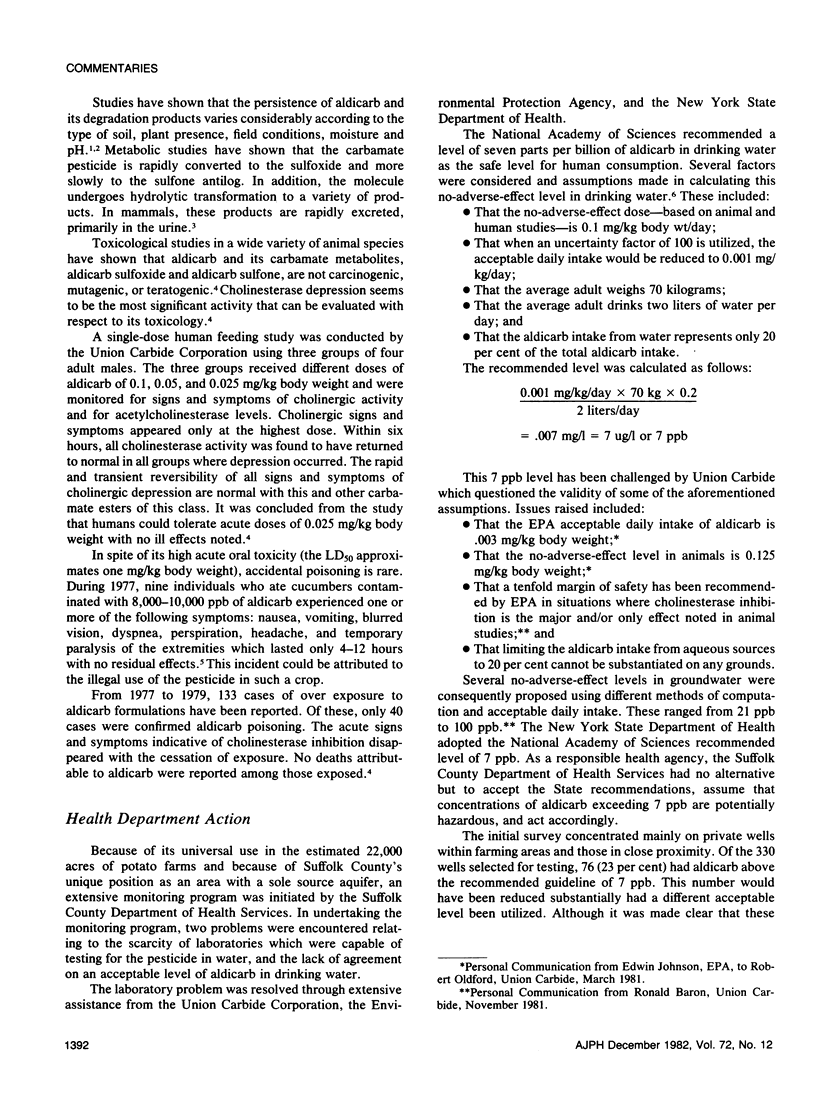Abstract
Aldicarb, a carbamate pesticide, was detected for the first time in groundwater in Suffolk County, New York, in August 1979. Although all laboratory and field studies indicated that the pesticide could not reach groundwater, a combination of circumstances allowed its residues not only to reach groundwater but also to be ingested by humans. Inquiries in hospitals and poison control centers did not reveal any cases of carbamate poisoning. The extensive monitoring program, conducted by the County in cooperation with the federal and state agencies and the Union Carbide Corporation, showed that 1,121 (13.5 per cent) of the 8,404 wells examined exceeded the state recommended guidelines of 7 ppb. Of the contaminated wells 52 per cent contained adicarb between 8 and 30 ppb, 32 per cent between 31 and 75 ppb, and 16 per cent more that 75 ppb. Residents whose wells exceeded the guideline were advised not to use the water for drinking or cooking purposes and to obtain an alternate source of potable water. The Union Carbide Corporation provided those residents with activated carbon filtration units. The incident raises several serious issues, such as the testing of pesticides under field conditions prior to registration and during their use, the validity of the recommended actionable levels, and the paucity of long-term epidemiologic studies of the health effects resulting from consumption of pesticides in trace concentrations.
Full text
PDF






